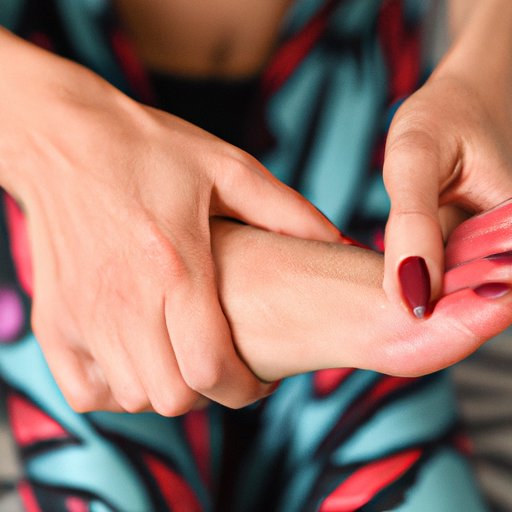
Introduction
For many women, menstrual pain can be a monthly battle. Painful cramps, headaches, and bloating can make it difficult to go about one’s daily routine. But there is good news: there are several natural remedies, exercises, and lifestyle modifications that can help reduce menstrual pain, making periods more comfortable and manageable.
Common Causes of Menstrual Pain and How to Reduce Inflammation
Menstrual pain is often caused by hormonal changes, muscle contractions, and inflammation. Inflammation, in particular, can exacerbate pain symptoms and make menstruation more uncomfortable. However, there are ways to reduce inflammation naturally and alleviate menstrual pain.
One way to reduce inflammation is to modify one’s diet and lifestyle. Eating an anti-inflammatory diet that includes leafy greens, healthy fats like those found in fatty fish, and berries can help reduce inflammation. In contrast, avoiding processed and high-sugar foods can increase inflammation and worsen pain symptoms. Practicing stress-reducing techniques, such as meditation or deep breathing, can also help reduce inflammation and ease pain.
Natural Remedies and Supplements that Can Help Reduce Menstrual Pain
Many natural remedies and supplements can also help alleviate menstrual pain symptoms. Ginger, for example, has anti-inflammatory properties that can reduce pain and inflammation during menstruation. Turmeric, another natural anti-inflammatory, can help reduce pain and inflammation as well. Magnesium supplements can also help relax muscles and ease cramps.
To incorporate these remedies into one’s diet, women can add ginger to their morning smoothie or try using turmeric in their cooking. Magnesium supplements can be taken in pill form or through foods such as spinach and almonds.
Exercise Routines that Can Reduce Menstrual Pain
Exercise can also play an important role in reducing menstrual pain. Yoga poses such as child’s pose, pigeon pose, and cat-cow stretch can focus on lower abdominal and back stretches, helping to reduce discomfort. Cardio exercises such as jogging, cycling, or swimming release endorphins, which can help reduce pain. Strength training exercises such as squats and lunges can also help relieve menstrual pain in the lower body.
The Importance of Hydration
Staying hydrated is important during menstrual periods. Drinking enough water can help alleviate pain symptoms by flushing out toxins and reducing inflammation. Women should aim to carry a water bottle with them everywhere and eat hydrating foods like watermelon and cucumber during menstruation.
List of Over-the-Counter Medications that Can Be Used to Relieve Menstrual Pain
Over-the-counter medications can also provide relief from menstrual pain. Advil, which contains ibuprofen, and Tylenol, containing acetaminophen, both help to reduce pain. Midol, a combination of acetaminophen, caffeine, and antihistamine, can alleviate pain, bloating, and fatigue associated with menstruation.
Using Heat Therapy to Alleviate Pain Symptoms
Applying heat to the lower abdomen and back can also alleviate menstrual pain symptoms. This can be done using a heating pad or hot water bottle, taking a warm bath or shower, or using a warm towel or blanket.
Conclusion
Menstrual pain is a common experience for many women, but it doesn’t have to be a debilitating one. Incorporating natural remedies, exercises, and lifestyle modifications can help reduce inflammation, alleviate pain symptoms, and make menstruation more comfortable. It’s important to remember that every woman’s body is different, and finding the right solution may take some experimentation. However, with a little perseverance, women can reduce menstrual pain and enjoy their periods more.




